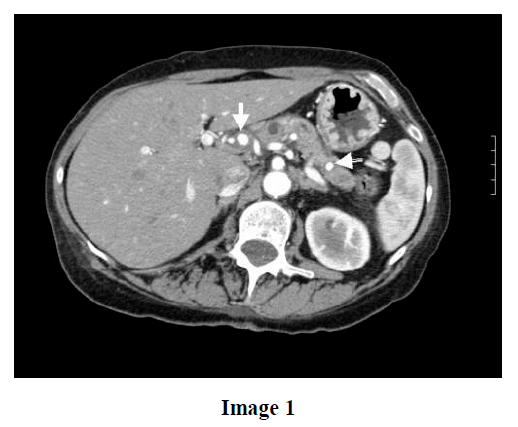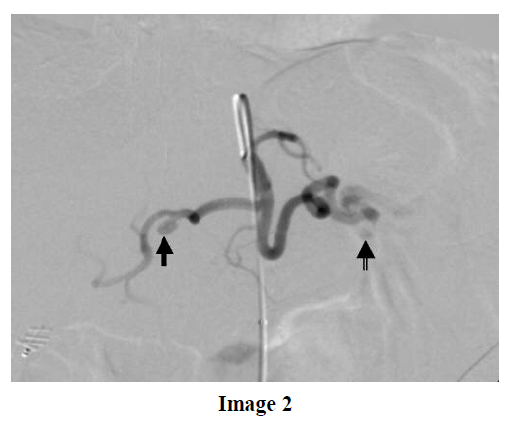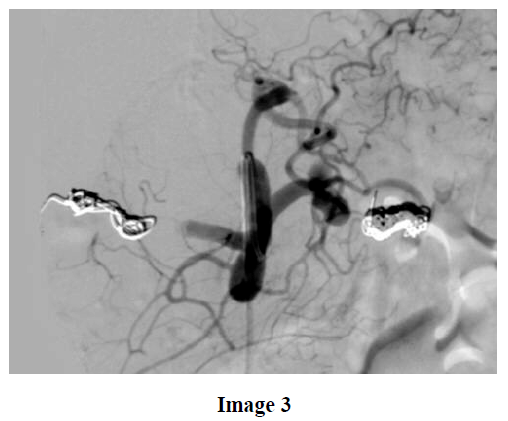- (2004) Volume 5, Issue 5
Surakit Pungpapong, Massimo Raimondo
Division of Gastroenterology and Hepatology, Mayo Clinic. Jacksonville, FL, USA
Received May 3rd, 2004 - Accepted June 17th, 2004
Aneurysm, False; Angiography; Embolization, Therapeutic; Gastrointestinal Hemorrhage; Pancreatic Ducts; Pancreatic Pseudocyst; Pancreatitis
A 63-year-old woman was transferred to our institution with obscured intermittent gastrointestinal bleeding for consideration of capsule endoscopy. Her past medical history was significant for idiopathic chronic pancreatitis, complicated by pancreatic pseudocysts. Several upper and lower endoscopies failed to identify any source of bleeding. CT scan of abdomen with intravenous contrast demonstrated chronic pancreatitis with 2 pseudocysts in the head and body of the pancreas. There were two pseudoaneurysms identified, one arising from the common hepatic artery communicating with one of pseudocyst (Image 1, solid arrow) and the other arising from the splenic artery communicating with main pancreatic duct in the tail of pancreas (Image 1, double arrow). Patient underwent selective celiac angiography, which confirmed the

pseudoaneurysms (Image 2). The coil embolization of the common hepatic artery and the splenic artery were successfully performed to occlude the pseudoaneurysms (Image 3). No further gastrointestinal bleeding recurred following the procedure.

